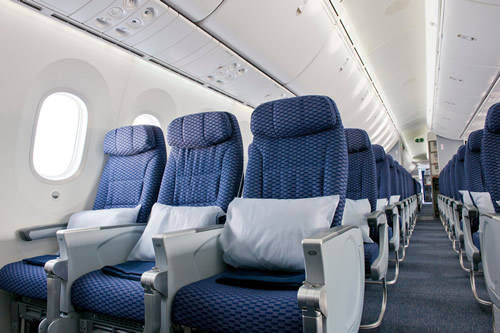After pioneering a version of the ‘premium economy’ concept in the US market roughly 15 years ago, United Airlines is fully accustomed to pricing its extra legroom product based on travel demand patterns rather than keeping prices static. But the US major continues to “tune-up technology” , says CEO Jeff Smisek, as it looks to support increased sophistication in managing various products now sold outside of the ticket price, including premium economy, priority boarding and food and beverage sales.
Smisek says Unitedʼs Economy Plus seats are now priced by “specific seat, by specific location on specific aircraft for a specific time of day and specific day of week”. On certain aircraft, United has up to 16 different pricing options for Economy Plus, he explains. “Thus, consumers who prefer an aisle seat will select and pay for that”, and passengers aiming to save a “little money” can select the middle seat.
During the first quarter of this year United chief revenue officer Jim Compton remarked that initial results from the carrier’s use of the “real-time positioning [pricing] tool” show more than a 15% increase year-on-year in ancillary revenue.
United shored up its dynamic pricing strategy this year as it reached agreements with major global distribution systems (GDS) to list its Economy Plus inventory after taking a hiatus in 2012 when United-Continental cut over to legacy Continentalʼs Shares passenger service system. The carrier has reached deals with Amadeus and Travelport to “begin altering Economy Plus” to “improve access to ancillary products for some of our most valuable customers by distributing these products through the channels most corporate customers use,” says Compton. United reached a similar deal with Sabre in 2013.
But even as United presses forward to maximise Economy Plus revenue, technological hurdles remain for corporate travel agents to fully exploit premium economy sales. CEO of technology supplier Farelogoix Jim Davidson recently highlighted the difficulty of selling extra legroom products from a “green screen”.
GDS companies do appear to recognize the need to improve the workflow for travel agents to manage premium economy bookings, concludes Atmosphere Research Group travel analyst Henry Harteveldt, who notes that these companies have unveiled platforms to make it easier for agents to purchase seats featuring extra legroom.
United, meanwhile, continues its “technology tune-up” through a roll-out of the first phase of its new website this summer. Compton boasts the changes should “provide improved ancillary revenue opportunities and a better customer experience and result in lower distribution cost as more of our customers use united.com”.
The move to match premium economy pricing with demand is sweeping across the industry landscape as airlines solidify their respective merchandising strategies to further maximize ancillary revenue.









